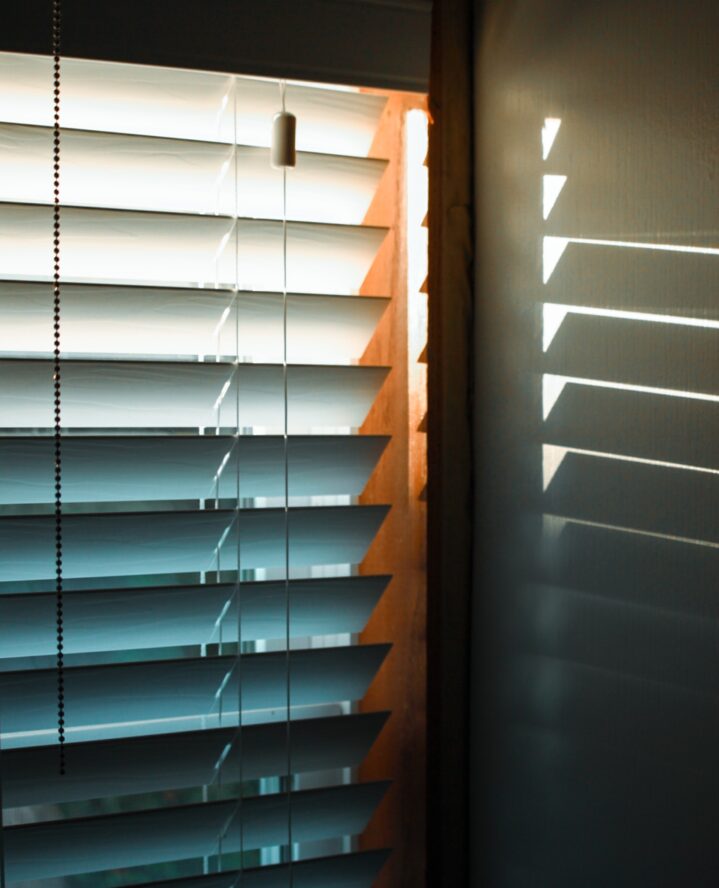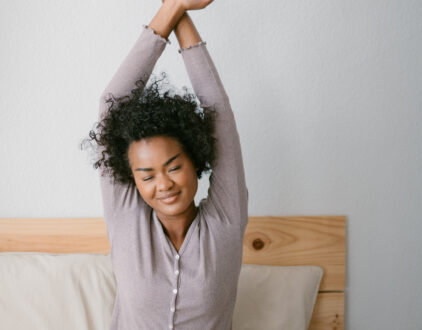Sleep is a vital component of our overall well-being, affecting both our physical and mental health. If the day has been long at work with meetings and other decision-making going on, the mind needs to repair itself from the stress. Sleep helps with this. Or, perhaps the day ended with a grueling workout at the gym; it is during sleep that muscles knit themselves back together and repair. During sleep, our bodies recover, repair, and thus allow people to wake up feeling refreshed. For this reason, having a room properly prepared to give one the best sleep possible is important. Part of that preparation? How to close the blinds.
Creating A Dark Sleep Environment By Choosing The Right Blinds
Before delving into “how to close blinds” techniques, it is crucial to consider the different types of blinds and privacy that comes with them. Various options, such as roller blinds, vertical blinds, or Venetian blinds, offer different levels of light and privacy control.
For both vertical and Venetian blinds, understanding what direction to turn the blinds becomes important. Turn them one way and perhaps people are looking in to watch slumberers snore the night away. Turn them the other way and perhaps there is too much light sneaking in between the slats.
As for roll-down shades and curtains? Well, if they are not properly cut to fit the window, light can seep in around the edges and under desperately closed eyelids. This light will cause distraction while someone tries to fall away to REM land, much like looking at a smartphone while lying in bed.
With that being said, what’s the best way to create an environment conducive for sweet recovery sleep? Let’s first consider a frugal yet powerful solution: blackout curtains.
What are Blackout Curtains?
One of the most effective (and economical) ways to promote a good night’s sleep is by using blackout blinds or curtains. These specialized window coverings are designed to block out external light sources, providing a dark and cool atmosphere conducive to sleep. Blackout blinds or curtains are typically made with light-blocking materials that prevent sunlight from seeping into the room. By eliminating or reducing external light, they help signal the brain that it is time to rest and thus improve the quality of your sleep.
These curtains are relatively inexpensive. When purchasing them for the bedroom, make sure to have the exact dimensions of the windows so the curtains can fit edge to edge. In fact, letting the curtains extend a little bit over the edge will help block out any potential stray light rays from creeping into the room.
As for the name blackout curtains? Well, they live up to it. These curtains really do act as light blockers. Once hung in a bedroom and with the lights turned out, they will effectively block out any external light from the room, thus creating an environment that is ripe to let the brain rest, recover, and feel refreshed in the morning.
Different Types Of Blinds For Enhanced Sleep
In addition to blackout blinds, there are other types of window treatments that can contribute to better sleep. Some blinds come with built-in timers, allowing you to set a specific time for them to automatically close. This feature is especially useful if people tend to forget to close the blinds before bed or if they prefer waking up gradually to the natural light of the morning.
Another option to consider is top-down, bottom-up blinds. These blinds can be adjusted to let light in from the top while maintaining privacy by covering the bottom portion of the window. This flexibility allows one to enjoy natural light while still creating a cozy and private atmosphere in a bedroom.
Tension rods and curtains can be a great solution for those seeking a more economical approach. By installing a tension rod inside a window frame and hanging curtains with light-blocking lining, a darkened environment can be created without investing in specialized blinds. This option provides both privacy and the ability to control the amount of light entering the room.
Another alternative to consider is window film. Window film can be applied directly to windows, offering both privacy and light control. Depending on the type of film chosen, it can provide a frosted or stained glass effect, limiting visibility from the outside while still allowing natural light to filter through. Window film also has the added benefit of reducing glare and blocking harmful UV rays.
How to Close Blinds
With all the options now explored, it’s time to get to the topic at hand: How to close the blinds.
Align the Slats
If Venetian blinds or other types of blinds with adjustable slats are installed, aligning them properly can make a notable difference. During the day, slightly tilting the slats upward allows natural light to filter through while maintaining privacy. However, at night or when desiring complete darkness, closing the slats entirely in a downward position is essential. This not only blocks external light but also ensures privacy by preventing anyone from seeing inside a home.
Implement Overlap Techniques
To maximize privacy and minimize light leakage, an effective technique is overlapping the blinds. If multiple blinds or curtains are installed, closing them in layers provides an added barrier against incoming light and prying eyes. Start by closing the blinds closest to the window and then draw the curtains or drapes. This method creates a more effective light-blocking solution and enhances privacy, especially when combined with blackout materials.
Close Gaps and Adjust Length
Even with the blinds fully closed, light can sometimes enter through gaps or spaces between the blinds or around the edges. To mitigate this, inspect the blinds for any visible gaps and make necessary adjustments. Consider installing blinds with wider slats or adding weatherstripping to block any unwanted light or drafts. Additionally, ensure that the blinds are long enough to reach the window sill or floor, eliminating any potential light leakage from the bottom.
Utilize Additional Accessories
In certain cases, employing additional accessories can further enhance the effectiveness of your blinds. Attachments such as magnetic strips or Velcro can be used to secure the edges of the blinds to the window frame, minimizing light gaps. If the blinds are corded, using cord cleats or cord stops can help prevent any accidental raising of the blinds during sleep. These small additions can significantly contribute to improved sleep and privacy.
Properly Closing the Blinds to Minimize Light
Closing the blinds properly is essential to prevent light from filtering into a room and, in turn, filtering through half closed eyes. Even the smallest gaps can disrupt one’s sleep by allowing unwanted light to enter the room. Take the time to ensure that the blinds are fully closed, paying attention to any potential areas where light might leak through. By making your room as dark as possible, you create an optimal environment for deep and uninterrupted sleep.
Proper sleep is vital for our physical and mental well-being, and creating an ideal sleep environment is essential for achieving restful nights. By utilizing blackout blinds or curtains, properly closing the blinds to minimize light leakage, and exploring alternative options like timers, top-down bottom-up blinds, tension rods, curtains, and window film, you can transform your bedroom into a tranquil space for rejuvenating sleep.
Invest in your sleep, and you’ll reap the benefits of improved overall health and well-being.
popular posts
FOLLOW ALONG ON INSTAGRAM
#homeandtexture
Find us on social for more home inspiration where culture, personal style, and sophisticated shopping intersect to help you create a home where you love to live.



